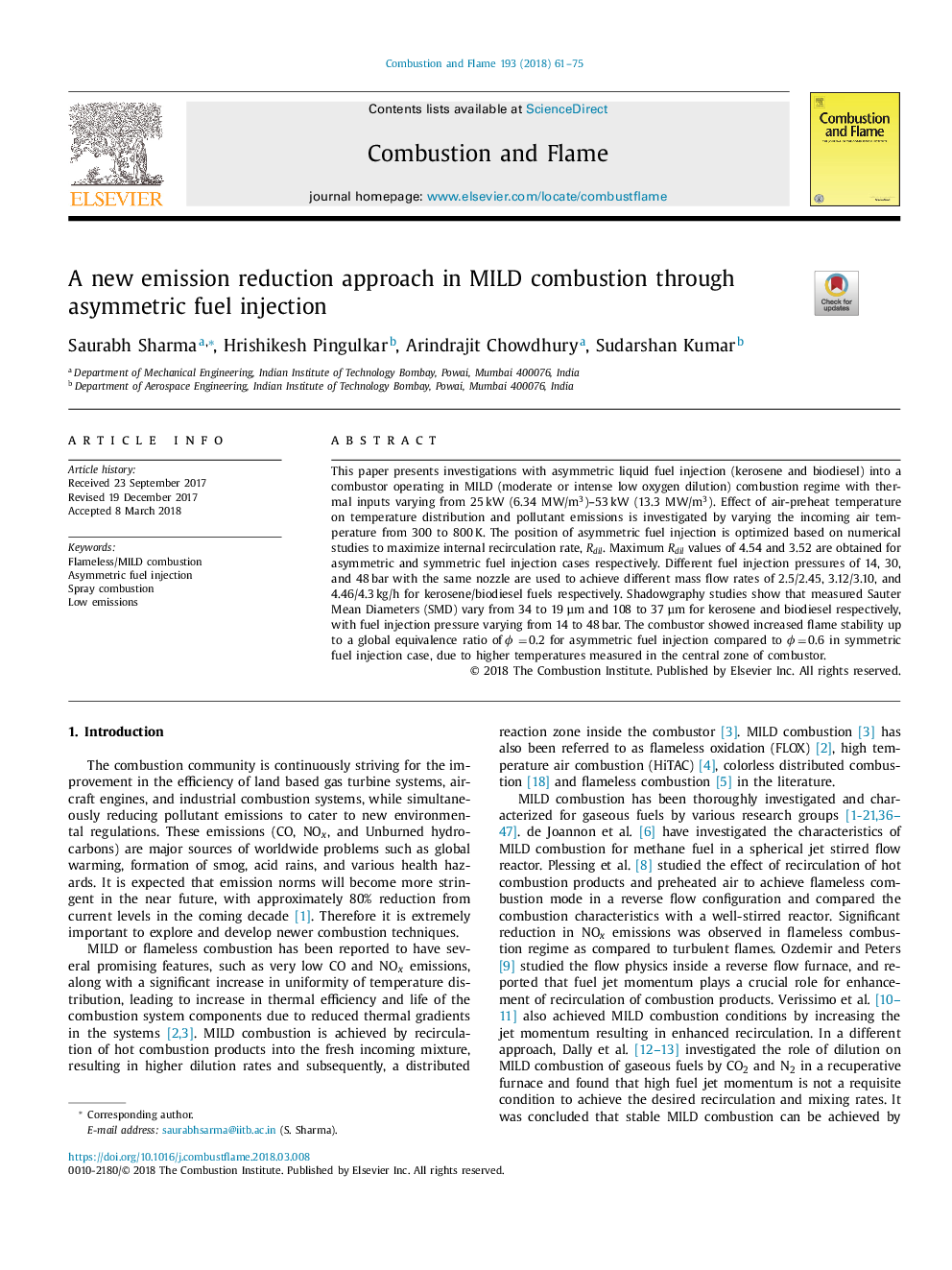| Article ID | Journal | Published Year | Pages | File Type |
|---|---|---|---|---|
| 6593542 | Combustion and Flame | 2018 | 15 Pages |
Abstract
This paper presents investigations with asymmetric liquid fuel injection (kerosene and biodiesel) into a combustor operating in MILD (moderate or intense low oxygen dilution) combustion regime with thermal inputs varying from 25â¯kW (6.34 MW/m3)-53â¯kW (13.3 MW/m3). Effect of air-preheat temperature on temperature distribution and pollutant emissions is investigated by varying the incoming air temperature from 300 to 800â¯K. The position of asymmetric fuel injection is optimized based on numerical studies to maximize internal recirculation rate, Rdil. Maximum Rdil values of 4.54 and 3.52 are obtained for asymmetric and symmetric fuel injection cases respectively. Different fuel injection pressures of 14, 30, and 48â¯bar with the same nozzle are used to achieve different mass flow rates of 2.5/2.45, 3.12/3.10, and 4.46/4.3â¯kg/h for kerosene/biodiesel fuels respectively. Shadowgraphy studies show that measured Sauter Mean Diameters (SMD) vary from 34 to 19 µm and 108 to 37 µm for kerosene and biodiesel respectively, with fuel injection pressure varying from 14 to 48â¯bar. The combustor showed increased flame stability up to a global equivalence ratio ofâ¯Ï =â¯0.2 for asymmetric fuel injection compared to Ïâ¯=â¯0.6 in symmetric fuel injection case, due to higher temperatures measured in the central zone of combustor.
Keywords
Related Topics
Physical Sciences and Engineering
Chemical Engineering
Chemical Engineering (General)
Authors
Saurabh Sharma, Hrishikesh Pingulkar, Arindrajit Chowdhury, Sudarshan Kumar,
